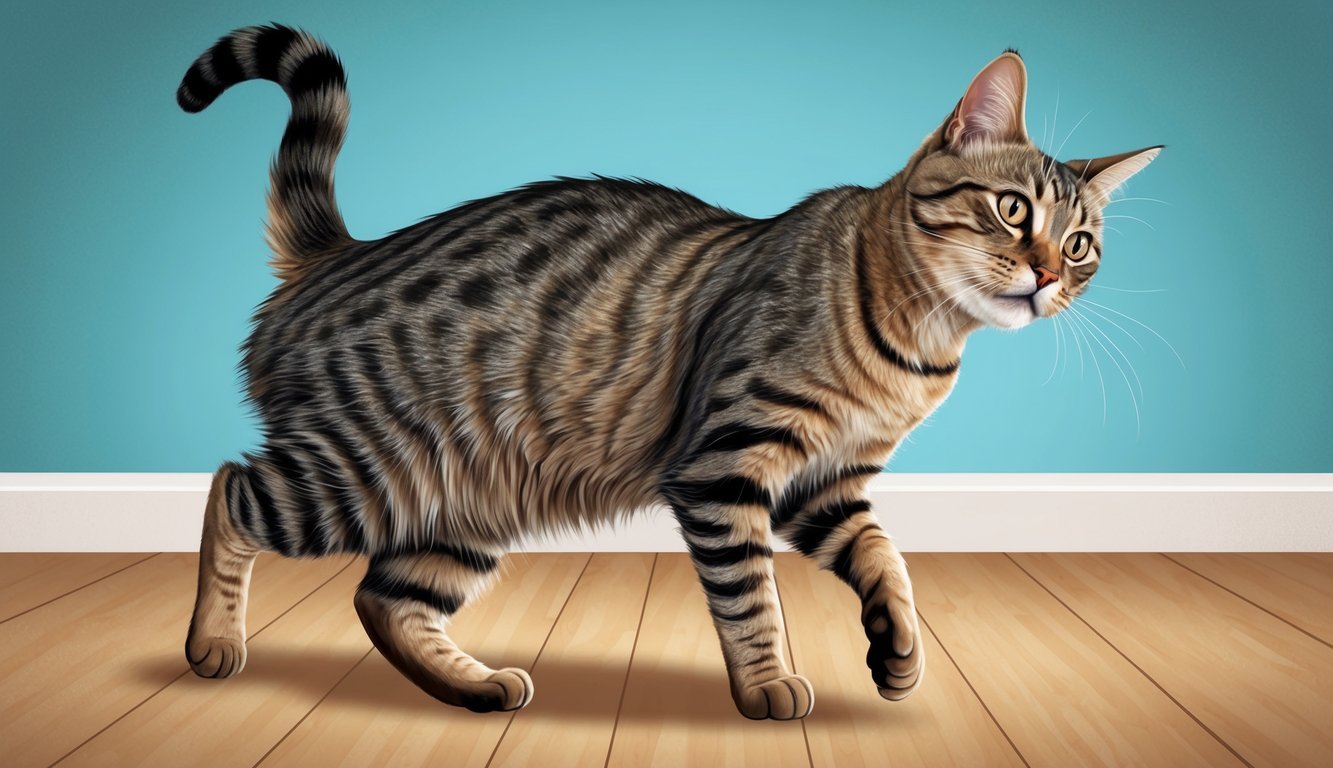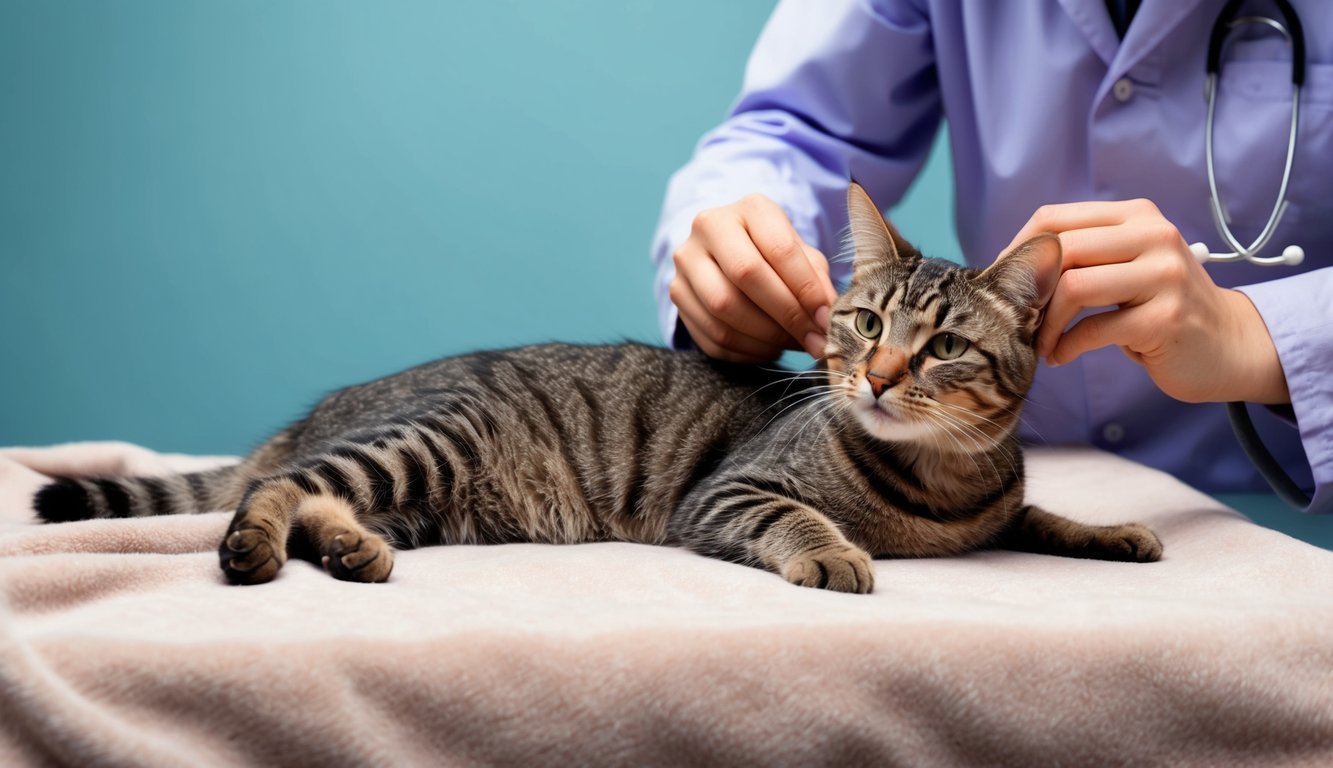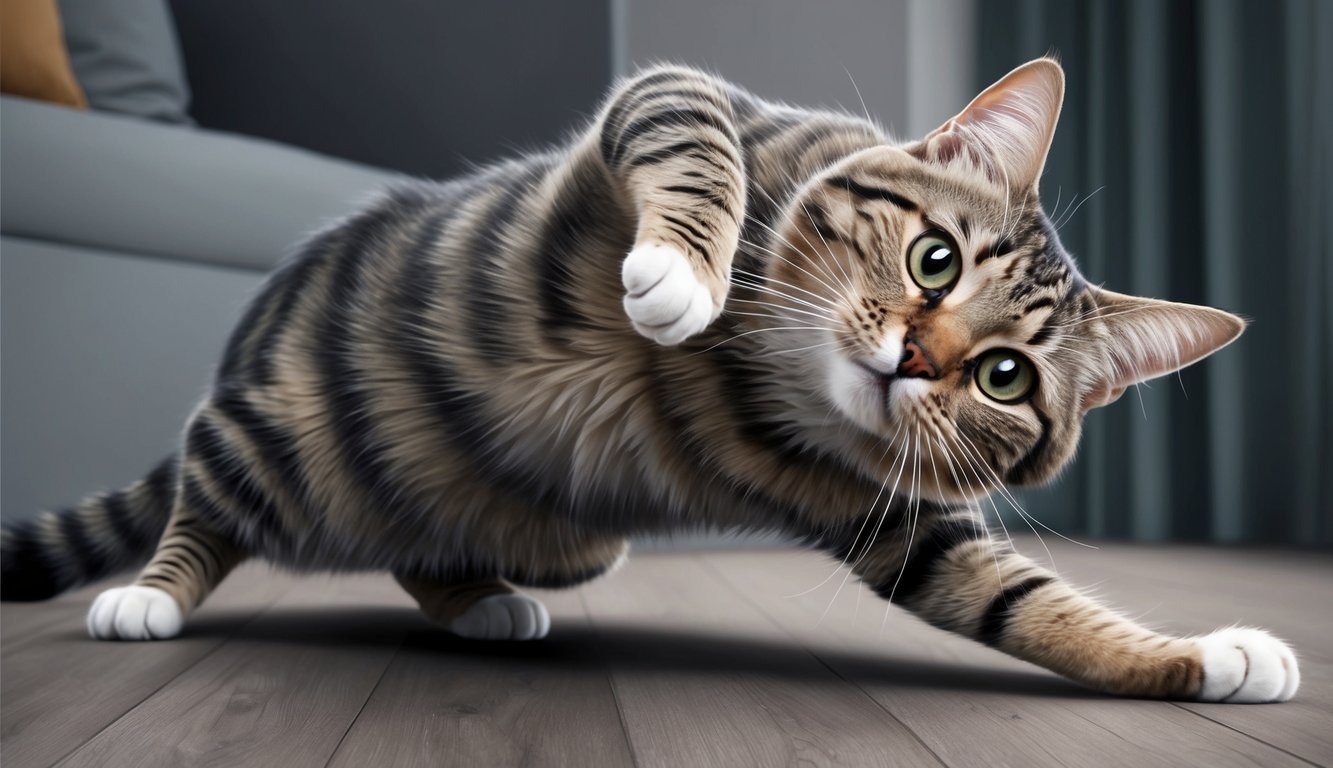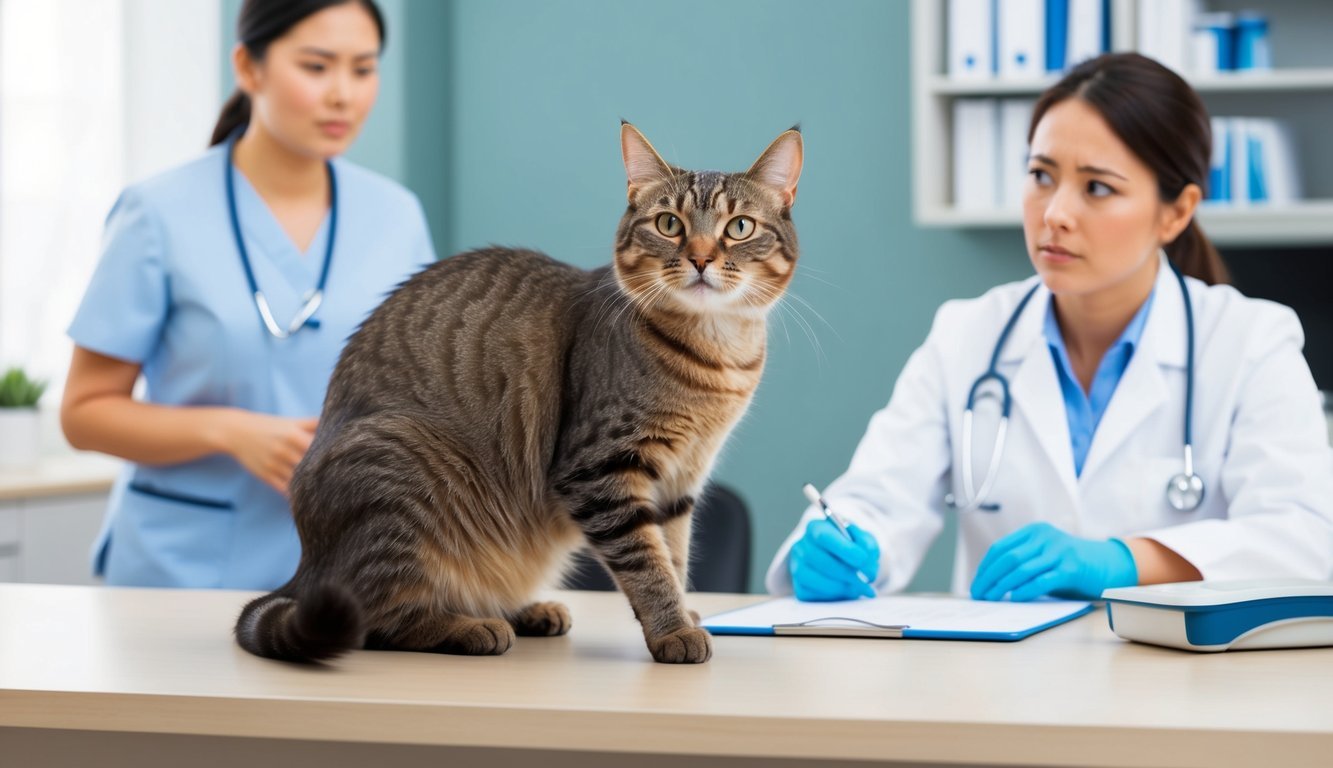Vestibular disease in cats is a condition that can significantly affect your pet’s balance and coordination.
It can be alarming to witness your cat suddenly losing its ability to walk straight or seeming dizzy.
Recognizing the signs early on can make a significant difference in your cat’s recovery and overall well-being.
This disorder can stem from various causes, including inner ear infections or issues within the brain.
As a cat owner, being aware of the symptoms, such as tilting of the head, loss of balance, and abrupt changes in behavior, is crucial.
Understanding when to take your pet to the vet can help ensure timely treatment and a better prognosis.
With the right approach, many cats recover from vestibular disease.
Whether through medication, supportive care, or even just lots of rest, there are multiple avenues for effective management and healing.
Ensuring you’re informed can empower you to provide the best care for your feline friend.
Key Takeaways
- Early detection of vestibular disease can improve recovery for your cat.
- Common symptoms include loss of balance and changes in head position.
- Consult your vet for the best treatment options tailored for your cat.
Understanding Vestibular Disease

Vestibular disease can be a perplexing condition for cat owners.
It’s essential to grasp how the vestibular system works and the different types of vestibular disease that can affect your cat.
The Vestibular System Explained
The vestibular system is crucial for balance and spatial orientation.
Located within the inner ear, it consists of fluid-filled canals and specialized nerve cells.
These components detect changes in head movement and send signals to the brain.
When things go awry, your cat may experience loss of balance, leading to symptoms such as head tilting and unsteady movements.
This dysfunction can stem from various causes, including infection, inflammation, or even tumors.
Understanding this system helps you recognize when your cat is in distress.
Being aware of the symptoms can lead to quicker intervention, which is vital for your cat’s recovery.
Types of Vestibular Disease in Cats
Vestibular disease in cats is generally categorized into two main types: peripheral and central vestibular disease.
Peripheral vestibular disease usually originates from issues in the inner ear.
Common causes include infections, trauma, or aging.
Symptoms may appear suddenly and include incoordination, head tilting, and nystagmus (rapid eye movement).
Central vestibular disease, on the other hand, stems from problems in the brain or brainstem.
Causes may involve tumors, inflammatory diseases, or even idiopathic reasons, where no specific cause is identified.
Each type has distinct symptoms and treatment paths.
Identifying whether your cat has central or peripheral vestibular disease is crucial for effective treatment and recovery.
Common Symptoms and Signs
When your cat experiences vestibular disease, you’ll likely notice several distinct signs.
These symptoms can include issues with balance, head positioning, and even gastrointestinal upset.
Recognizing these signs early can help in diagnosing and managing the condition effectively.
Identifying Vestibular Disease
Identifying vestibular disease in your cat starts with observing unusual behaviors.
You may see your cat circling or falling to one side, which is often a clear indicator of this condition.
Another common sign is nystagmus, where the eyes move involuntarily back and forth.
Pay attention to how your cat behaves in familiar environments.
If they seem disoriented or are struggling to navigate spaces they know well, it’s a red flag.
Rapid changes in behavior can indicate an urgent need for veterinary evaluation.
Nausea and Balance Issues
Nausea often accompanies vestibular disease.
You might notice your cat licking its lips frequently or refusing to eat.
It may also exhibit signs like vomiting, which can complicate its recovery.
Balance issues will manifest in your cat’s ability to walk or stand.
You may see your cat sway side to side or have trouble maintaining an upright position.
These symptoms create a stressful situation for both you and your cat, as they struggle to balance and regain control.
Head Tilt and Incoordination
A pronounced head tilt is another characteristic sign of vestibular disease.
Your cat might hold its head at an unusual angle, which can indicate a problem with the inner ear.
This tilt often coincides with incoordination, where your cat struggles to coordinate its movements during walking or jumping.
You might find your cat appearing clumsy or unsteady, which can lead to accidental falls.
Both conditions are often distressing for your pet, and they may also seem less active or withdrawn.
Recognizing these signs early allows you to seek appropriate veterinary care and support your cat through recovery.
Causes and Diagnosis
When addressing vestibular disease in cats, it’s crucial to understand the various causes that can lead to these balance-related issues.
Additionally, accurate diagnostics play a key role in identifying the specific underlying condition affecting your cat.
Infections Leading to Vestibular Issues
Infections are among the most common causes of vestibular disease in cats. Otitis media and otitis interna are middle- and inner-ear infections that can disrupt the vestibular system, leading to symptoms like head tilt and unsteady gait. Meningitis is another potential trigger, as inflammation affecting the central nervous system can impact balance.
Certain infectious diseases, such as feline infectious peritonitis (FIP), can also exhibit vestibular signs.
If your cat shows any unusual balance issues, a vet may recommend blood tests or imaging studies to rule out these infections.
Advanced Diagnostics for Vestibular Disease
Diagnosing vestibular disease involves a combination of assessments to pinpoint the root cause.
Your veterinarian may start with a detailed physical examination, followed by various diagnostic imaging techniques.
X-rays can help rule out structural issues, while advanced imaging like MRI provides a closer look at the brain and inner ear.
In addition, blood and urine tests are useful in identifying underlying infections or metabolic conditions.
These tests can provide valuable information about your cat’s overall health, guiding the treatment process effectively.
Congenital and Idiopathic Factors
Some cases of vestibular disease are linked to congenital conditions, meaning they develop from birth or early life.
For example, some cats may have congenital vestibular syndrome, which impairs their balance from a young age.
This form of the disease often carries no known cure but may improve with time.
Idiopathic vestibular syndrome is another possibility, where the cause remains unknown despite thorough evaluation.
This condition typically affects older cats and can resolve on its own, but persistent symptoms, such as facial drooping or nystagmus, might indicate a need for further investigation.
Effective management hinges on understanding these aspects of your cat’s condition.
Treatment Options

When your cat is diagnosed with vestibular disease, understanding the available treatment options is crucial.
The approach typically includes medications to manage symptoms and may involve supportive care to ensure your cat’s safety.
In some cases, surgical intervention could be necessary, depending on the underlying cause.
Medication and Supportive Care
Medications play a key role in managing vestibular disease symptoms.
Your veterinarian may prescribe anti-nausea medications to relieve vomiting and nausea, helping your cat regain its appetite.
Common choices include maropitant or ondansetron.
Anti-inflammatory medications may also be administered to reduce any inflammation affecting the vestibular system.
If an infection is suspected, your vet might suggest antibiotics.
Supportive care is just as important.
Creating a safe, confined space for your cat minimizes the risk of injury.
If your cat struggles to eat or drink, assisted feeding and fluid administration may be necessary.
Remember to keep a close eye on your pet’s behavior during recovery.
Surgical Interventions
Surgical options for vestibular disease aren’t common and usually only considered if a specific, correctable issue is identified.
For instance, if an inner ear infection leads to vestibular signs, addressing that infection surgically might be necessary.
In cases of tumors or other structural abnormalities affecting balance, surgery might be required to alleviate pressure on the nervous system.
Before proceeding with surgery, your veterinarian will discuss risks and expected outcomes to ensure you are well-informed.
While surgical options exist, many cats respond well to medical management and supportive care, making surgery a less frequent solution.
Prognosis and Recovery

When your cat is diagnosed with vestibular disease, it’s natural to be concerned about what lies ahead.
Most cats exhibit a good prognosis, especially if they have idiopathic vestibular disease, meaning the cause is unknown.
Understanding both short-term and long-term outcomes can help you provide the best care.
Short-Term and Long-Term Outcomes
In the short term, symptoms such as loss of balance, head tilt, and involuntary eye movement usually appear suddenly.
During the first 24 to 48 hours, your cat may seem disoriented and unwell.
Despite these alarming signs, many cats start to show improvement within a few days.
If your cat is diagnosed with feline idiopathic vestibular disease, recovery is often rapid.
Many cats return to their normal behavior within a few weeks.
Long-term outcomes vary depending on any underlying conditions.
Cats with additional health issues might take longer to recover, while those with no other complications typically do well.
Rehabilitation and Care at Home
At-home care is vital in helping your cat recover.
Ensure they have a quiet, comfortable space to rest.
Encourage them to eat and drink, as maintaining hydration and nutrition is essential.
You might need to assist if they’re struggling.
Monitor your cat for any changes in symptoms.
Regular check-ups with your veterinarian are important for assessing recovery.
Gentle encouragement to move around can help with rehabilitation, but be careful not to overwhelm them.
By providing a supportive environment, you can assist your cat in navigating their recovery journey more smoothly.
When to Consult Your Vet

If your cat shows signs of vestibular disease, knowing when to seek veterinary help is crucial.
Certain symptoms may indicate a more serious underlying issue that requires immediate attention.
Recognizing Emergency Signs
Look out for increased severity of symptoms.
If your cat starts losing balance suddenly or falls over, it’s essential to consult your vet.
Other critical signs include:
- Abnormal eye movements: If your cat’s eyes are darting back and forth uncontrollably, this is concerning.
- Head tilt: A significant tilt that persists can indicate an issue with the inner ear, such as otitis interna.
- Vocalization: Distressed or urgent meows can signal discomfort or confusion.
- Loss of appetite: If your cat stops eating, it may be a sign of nausea or underlying illness, such as encephalitis.
Prompt veterinary care is necessary for these symptoms to ensure your cat receives the appropriate treatment.
Frequently Asked Questions

If your cat is facing vestibular disease, you likely have many questions.
Understanding the symptoms, care options, and other aspects of this condition can help you support your feline friend effectively.
What are the common symptoms of vestibular disease in felines?
You may notice signs such as uncoordinated movement, head tilting, and involuntary eye movements (nystagmus).
Other symptoms can include stumbling, falling, and nausea, which may lead to changes in appetite.
How can you care for a cat diagnosed with vestibular disease at home?
Keeping your cat comfortable is essential.
Provide a quiet, safe environment where they can rest without distractions.
You can help by offering food and water in an accessible location and ensuring they have a soft spot to lie down.
Are there any specific toxins known to trigger vestibular disease in cats?
Certain toxins, like those found in plants (such as lilies), can lead to vestibular-like symptoms.
Some medications or chemicals might also cause these issues, so you should keep potentially harmful substances away from your cat.
Does experiencing vestibular disease cause cats to sleep more than usual?
Yes, your cat may sleep more due to fatigue from the disease.
The loss of balance and coordination can be exhausting, leading them to seek more rest during their recovery.
Could vestibular disease cause pain to affected cats?
While vestibular disease primarily affects balance and coordination, some cats may experience discomfort or headaches as a result of the underlying issue.
Make sure to monitor your cat for signs of pain and consult your veterinarian for advice.
What’s the typical duration for a bout of vestibular disease in a cat?
The duration can vary significantly based on the cause.
Some cats recover within a few days, while others may take weeks.
Your vet can provide the best insight into your cat’s specific situation and expected recovery timeline.

